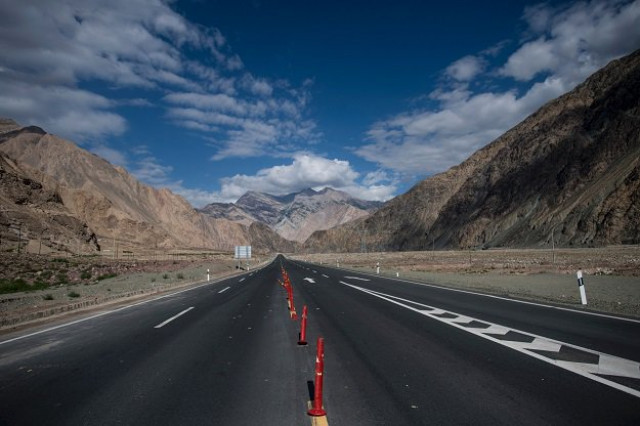BEIJING:
China is moving forward with the second phase of its $62 billion China-Pakistan Economic Corridor (CPEC) despite deep concerns among Chinese officials about security challenges, political instability, and Pakistan’s ability to ensure timely completion of projects that stalled during the first phase.
The renewal of Beijing’s commitment comes despite lingering frustrations over Pakistan’s implementation failures after its 2018 government transition, which saw critical infrastructure projects grind to a near halt. Chinese authorities remain particularly concerned about security threats to personnel, bureaucratic obstacles, and whether Islamabad can maintain policy consistency for the corridor that represents a cornerstone of China’s Belt and Road Initiative launched in 2013.
A Chinese diplomatic official expressed cautious optimism tempered by practical concerns. “For the past one and a half years, we are witnessing consistency and betterment in policies from Pakistan,” he said, while emphasising that “security remains our primary concern for our companies and investors.”
The first $25 billion phase, launched with great fanfare in 2015, achieved limited success in addressing Pakistan’s energy shortages and infrastructure gaps through power plants and road networks. However, the project’s momentum dissipated following Pakistan’s political changes, with multiple projects facing delays, cost overruns, and security challenges that tested Beijing’s patience.
The corridor represents a crucial strategic priority for China, designed to connect the Xinjiang Uygur autonomous region to the Arabian Sea at Gwadar, providing Beijing with direct access to Middle Eastern markets while bypassing the potential maritime chokepoint of the Strait of Malacca. This connectivity is essential for China’s energy security and trade expansion ambitions, making successful implementation critical despite the challenges.
“Pakistan has once again gotten a chance to rebuild its economy through the second phase of CPEC,” the Chinese official said, noting the timing is particularly important as Pakistan “recently averted a potential default”. The official stressed that “the country should not waste this opportunity,” indicating both the economic importance and Beijing’s apprehension about Pakistan’s capacity to deliver.
The second phase shifts focus from infrastructure to industrial cooperation and technology transfer, though Chinese officials remain wary of implementation risks. Chinese companies have shown interest in joint ventures with Pakistani counterparts, particularly in waste management energy generation and mass transit systems, including a proposed high-speed rail link between Lahore and Islamabad. However, these commitments remain contingent on improved security protocols and implementation frameworks.
The much-awaited $7 billion upgrade of Pakistan’s colonial-era Main Line One (ML-1) railways project is now at the centre of CPEC 2.0, a four-year initiative seeking financing from a consortium of bilateral and multilateral partners. The railway transformation represents both the ambition and the challenges of the new phase, requiring coordination among multiple stakeholders and continuous political support from Pakistani authorities.
Chinese officials have pointed to their own economic development model as inspiration for Pakistan, noting how Beijing lifted 800 million people out of poverty. “These investments can prove to be a fresh breath of air for Pakistan’s economy and its people,” the Chinese official said, while adding that success depends on whether “the country by large can avail this opportunity in its true spirit.”
The new phase aligns with Pakistan’s national policy agenda centred on the 5E’s, export, e-Pakistan, environment, energy, and equity, and China’s vision of building five corridors focused on growth, innovation, green development, livelihoods, and openness. This comprehensive framework aims to create sustainable economic development rather than simply constructing physical infrastructure, though Chinese officials remain cautious about Pakistan’s execution capabilities.
The Chinese diplomats said that a fully functional CPEC would provide a secure gateway to Gulf and African markets, allowing cheaper trade expansion with Middle Eastern energy suppliers. For Pakistan, they said, it offers the prospect of industrial development, job creation, and economic stability at a time when the country is emerging from financial crisis.
Nevertheless, the success of CPEC 2.0 will ultimately depend on Islamabad’s ability to address China’s persistent concerns about security, political stability, and implementation capacity. As another Chinese official noted, “CPEC 2.0 is not merely about infrastructure; it’s about ambition, innovation, and a shared future,” making Pakistan’s ability to ensure smooth implementation crucial for both countries’ strategic interests, as we foresee a greater role and future for Pakistan both at regional and international level.

